Hiking in Patagonia - Chile and Argentina
February 2-18, 2013
Part One - Chile
Page Two - Punta Arenas, Chile
Since we had the daytime free before meeting up with the Mountain Travel Sobek tour group
the evening of February 4,
we had prearranged an English speaking tour of the Seno Otway
penguin colony near Punta Arenas. Seno Otway
is a large inland sound in southern Chile.
Alternatively called Otway Sound, this natural waterway occupies a valley blocked
by a large terminal moraine left by the retreat of a glacier. It is connected to the Pacific
Ocean through the
Strait of Magellan via a narrow passage.
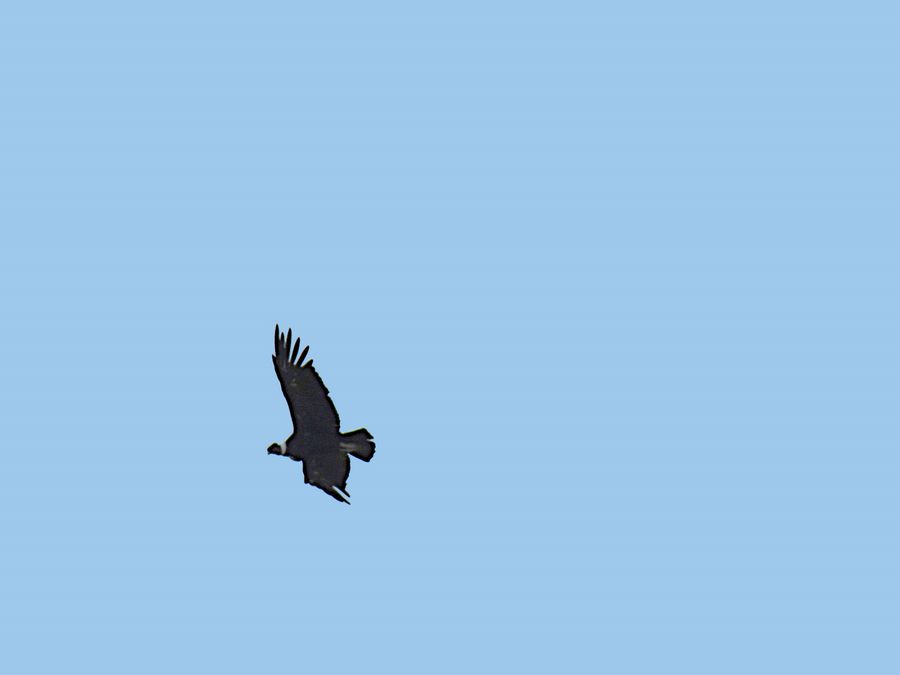
We saw Andean Condors flying high in the sky as we were nearing Seno Otway.
The Andean Condor has a wingspan of up to 10.5 ft.
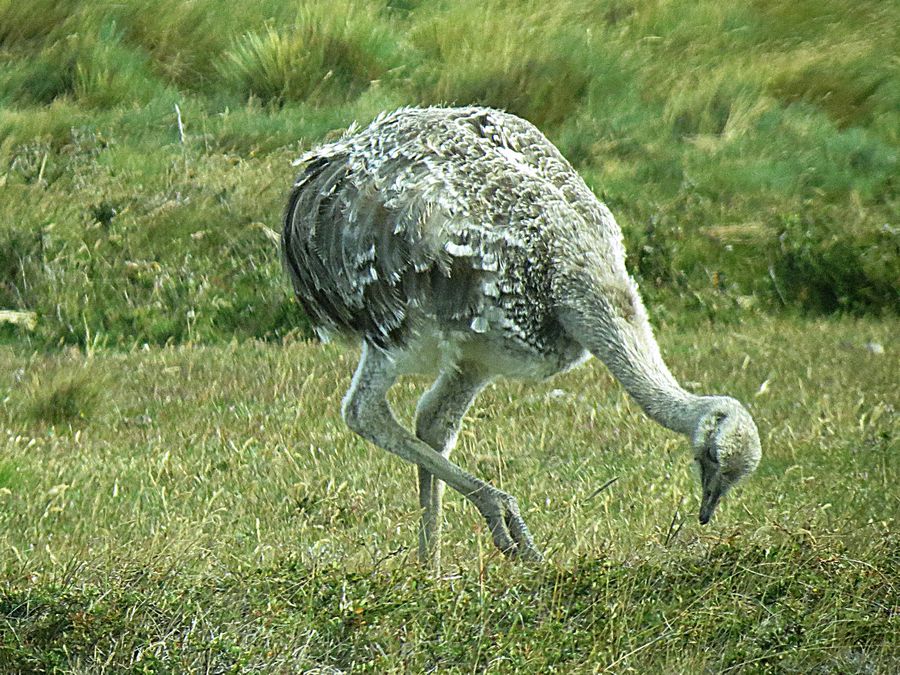
Lesser rhea near the road to Seno Otway penguin colony.
The Lesser Rhea stands at 35–39 inches tall. It has a small head and a small bill,
but has long legs and a long neck. It can run at speeds up to 37 mph, enabling it to outrun predators.
The sharp claws on the toes are
effective weapons.
Their plumage is spotted
brown and white, and the upper part of their tarsus is feathered.
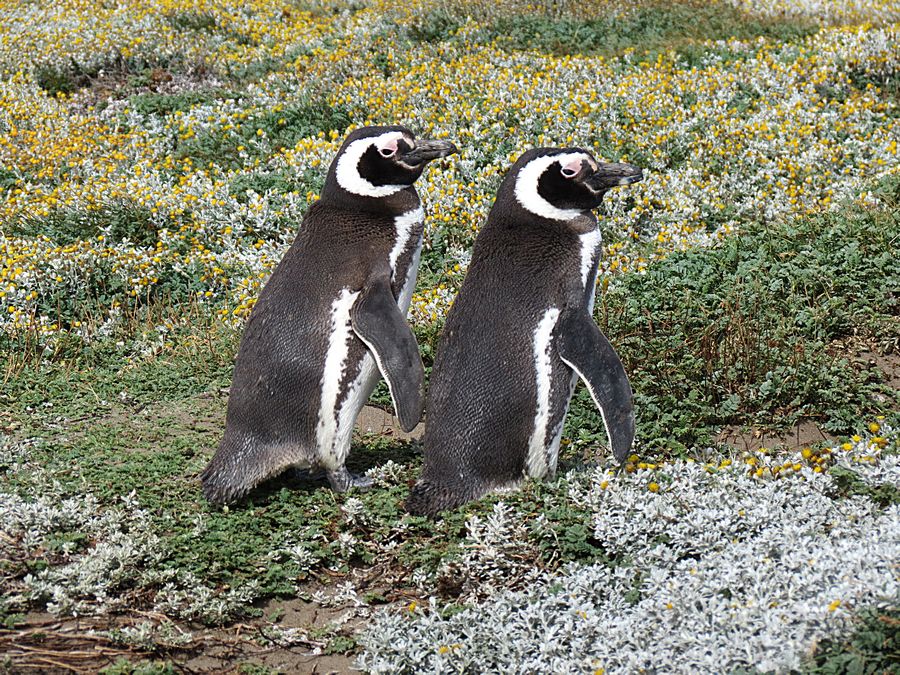
Magellanic Penguins at Seno Otway. The Magellanic penguin was named after
explorer Ferdinand Magellan, who spotted the birds in 1520.
Magellanic Penguins are medium-sized
penguins which grow to be 24–30 inches tall and weigh between 5.9 to 14.3 lbs.
The males are larger than the females,
and the weight of both drops while the parents
nurture their young. Adults have black backs and white abdomens. There are two black bands
between the
head and the breast,
with the lower band shaped in an inverted horseshoe.
The head is black with a broad white border that runs from behind the eye,
around the black ear and chin, and joins at the throat.
Magellanic Penguins can live up to 25 to 30 years in the wild.
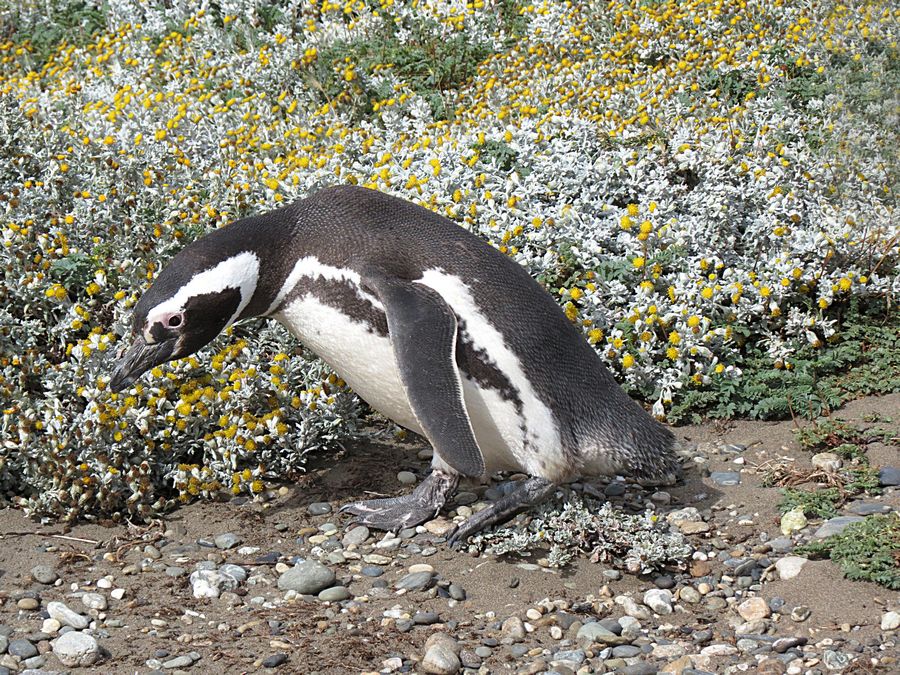
Like other species of penguins, the Magellanic Penguin has very
rigid wings used to cruise under water. They can dive more than 250
feet beneath the water's surface.
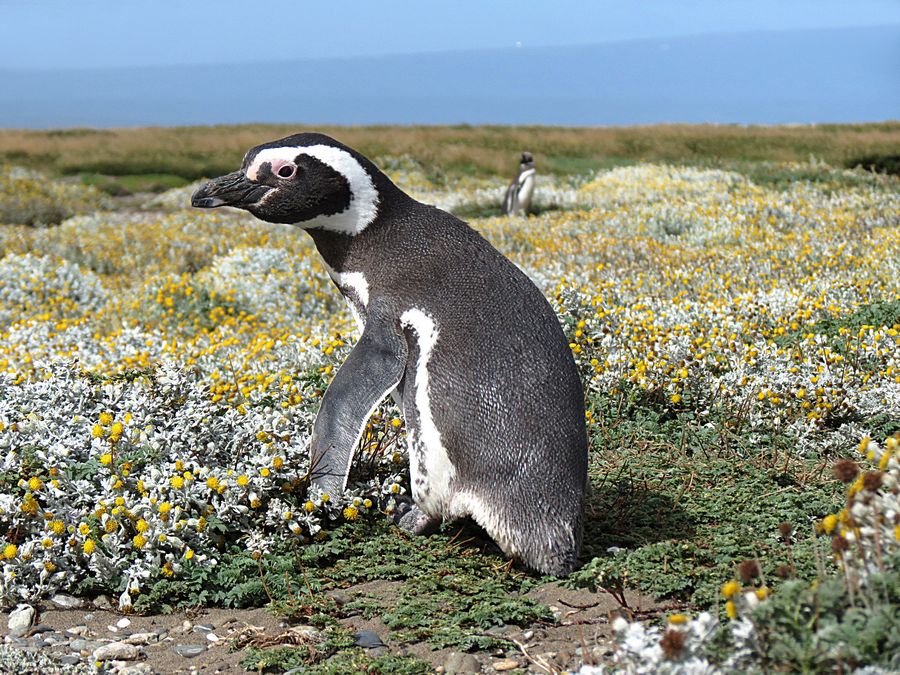
Magellanic Penguins feed in the water, preying on cuttlefish,
squid, krill, and other crustaceans, and ingest sea water with their prey.
Their salt-excreting gland rids the salt from their bodies.
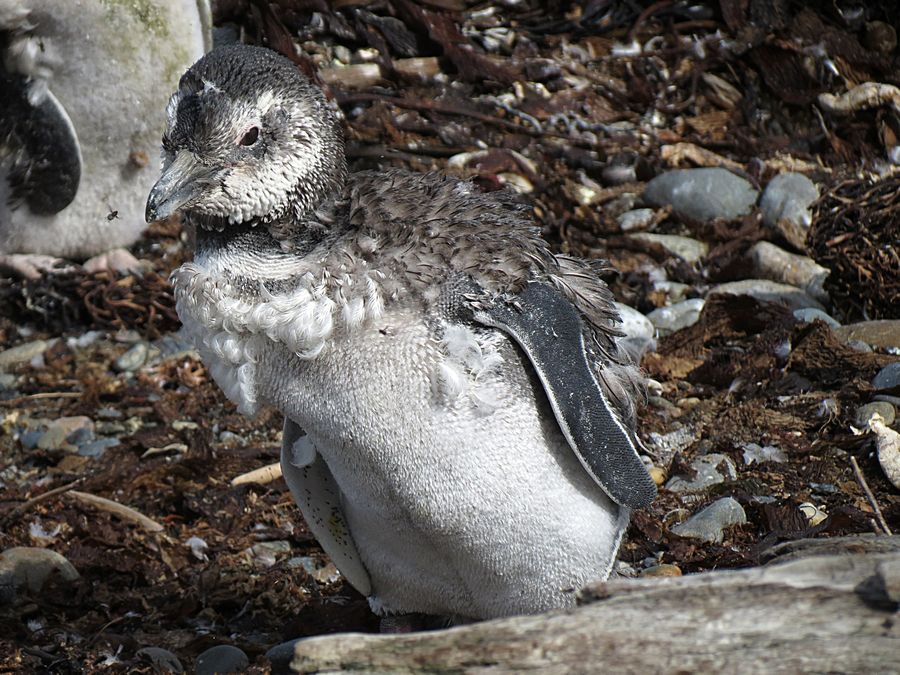
Chicks and younger penguins have grey-blue backs, with a more faded grey-blue color
on their chest.
Young birds usually have a blotched pattern on their feet,
which fades as they age.
By the time these birds reach about ten years of age,
their feet usually become all black.
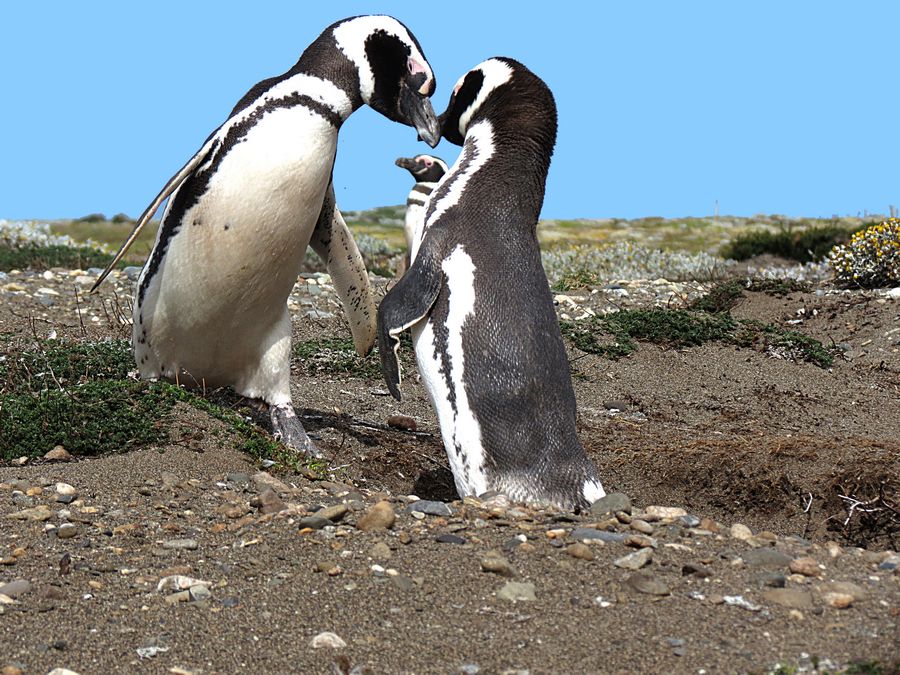
Magellanic Penguins travel in large flocks when hunting for food.
In the breeding season, they gather in large nesting colonies at the coasts of Argentina,
southern Chile,
and the Falkland Islands. Nests are built under bushes or in burrows.
Two eggs are laid. Incubation lasts 39-42 days, a task which the parents share in 10-15 day shifts.
The chicks are cared for by both parents for 29 days and are fed every two to three days.
Normally, both are raised through adulthood, though occasionally only one chick is raised.
Magellanic Penguins mate with the same
partner for life.
The male reclaims his burrow from the previous year and waits to reconnect with his female partner.
The females are able to recognize their mates through their call alone.
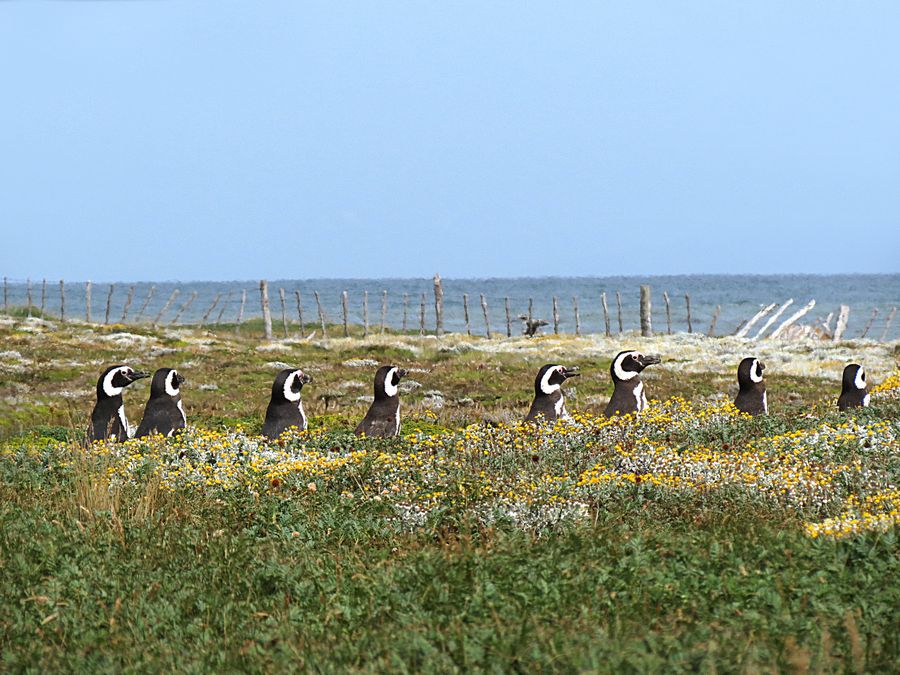
A line of penguins following a well worn path to the sea.
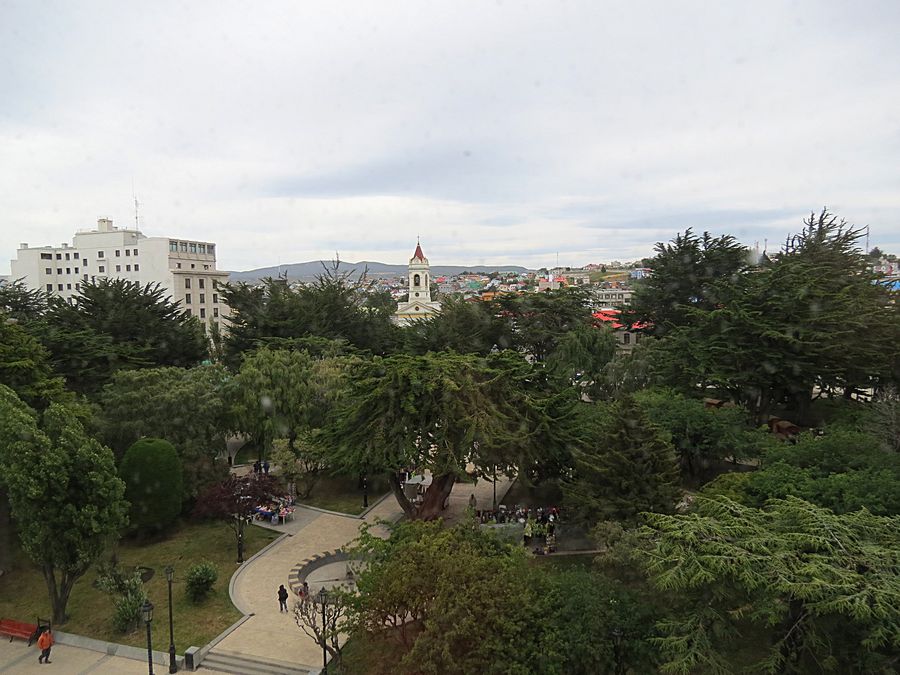
The main plaza in Punta Arenas as seen from our hotel room at Hotel Cabo de Hornos.
A town of around 130,000 people, Punta Arenas is
on the edge of the Strait
of Magellan.
It was originally a military garrison and penal settlement.
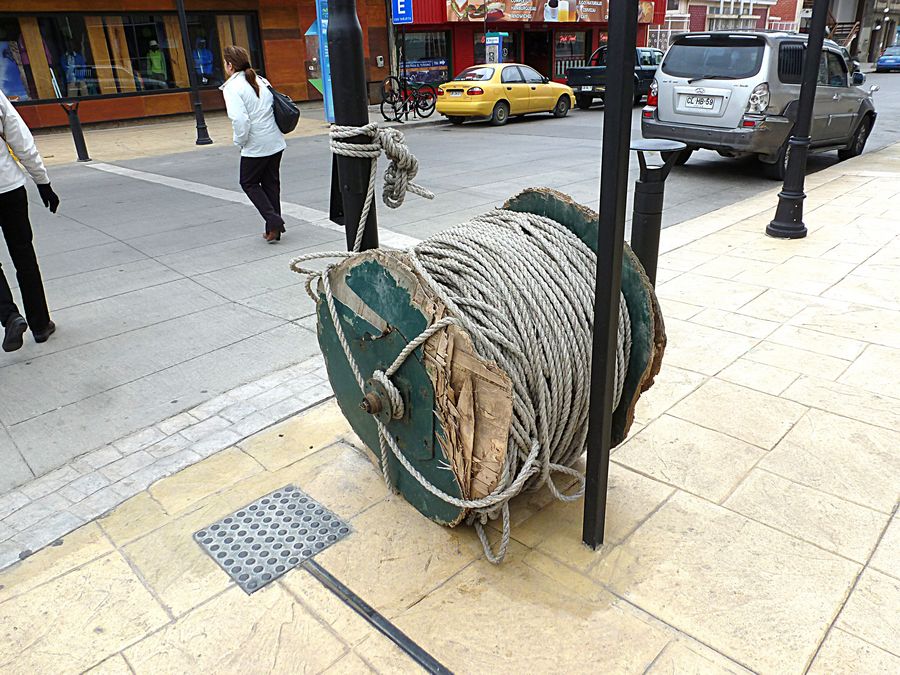
The winds are so strong in Punta Arenas that the city has to put up ropes at crosswalks
so that people can use them to cross the street when the winds are so severe
that people would be blown away or fall down otherwise.
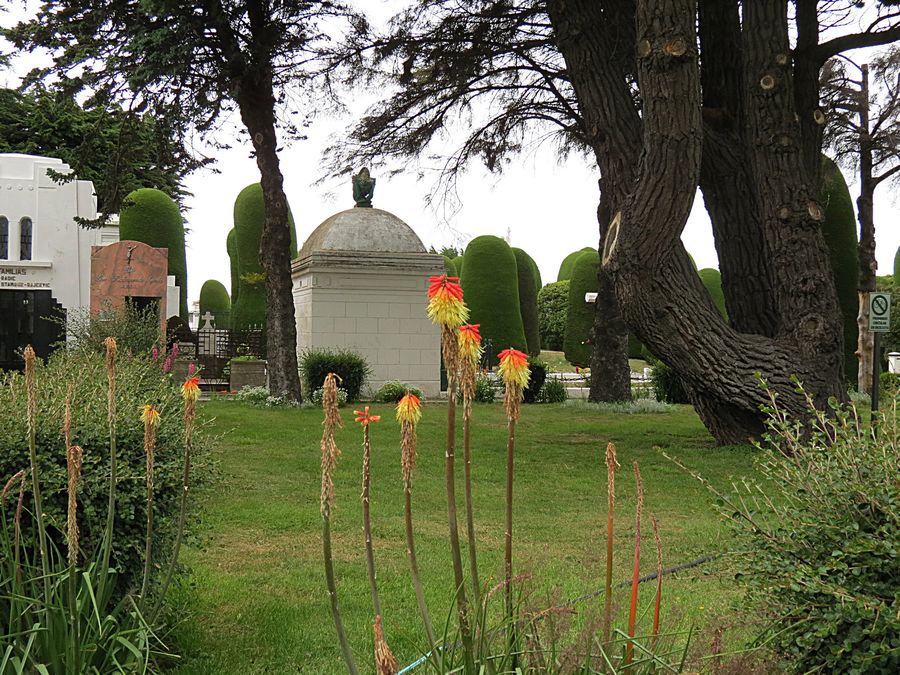
Cementerio Municipal in Punta Arenas contains a mix of humble
immigrant graves and extravagant tombs.
Link to Page Three - Driving to Torres Del Paine National Park in Chile
Pat's Home Page